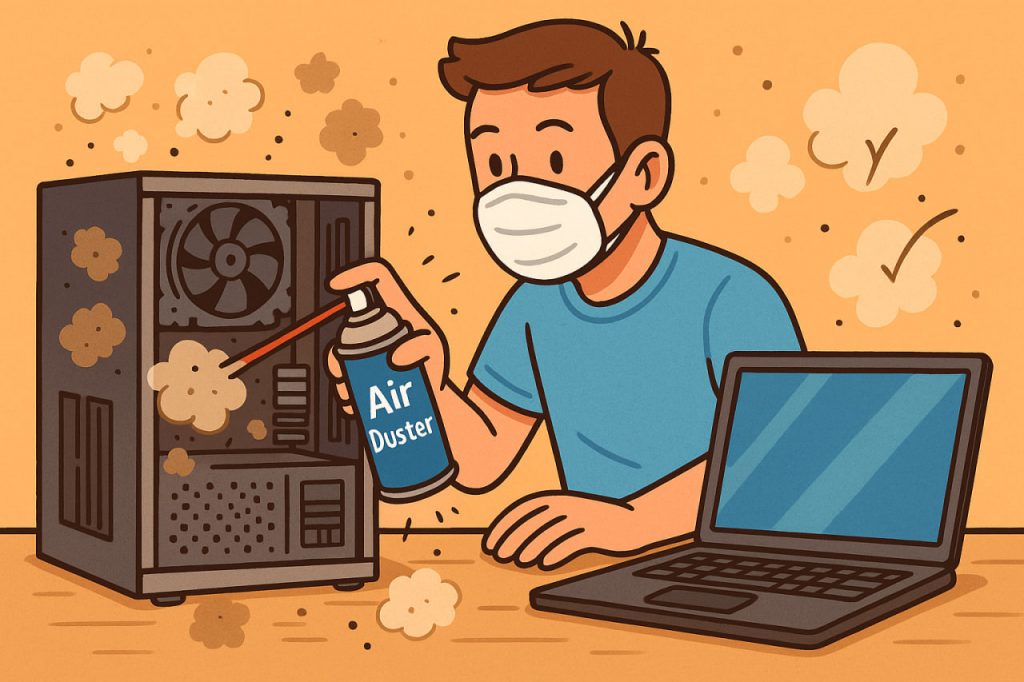Dust may seem harmless, but for computers and laptops, it can be a silent enemy. Over time, dust accumulates inside your device — especially around cooling fans, air vents, and heat sinks — and creates several serious issues:
- Overheating: Dust blocks airflow, which reduces the efficiency of cooling systems. Overheating leads to throttling, system slowdowns, or even component damage.
- Fan noise: As dust builds up, fans must spin faster to keep temperatures down, creating louder noise and using more power.
- Reduced performance and lifespan: High internal temperatures reduce the performance of CPUs and GPUs and accelerate wear on components.
- Risk of short-circuiting: In extreme cases, dust mixed with humidity can cause electrical short circuits.
Keeping your device clean means keeping it cool, quiet, and efficient.
How Often Should You Clean It?
The ideal cleaning frequency depends on your environment and usage:
| Environment | Recommended Cleaning |
|---|---|
| Dusty, carpeted, or pet-filled home | Every 2–3 months |
| Office or clean room | Every 4–6 months |
| Gaming or high-performance setup | Every 2–3 months |
| Laptop used on bed or soft surfaces | Every 2–3 months |
If your fan is constantly loud, or your device feels unusually hot — it’s likely time for a cleaning.
How to Clean Your Computer or Laptop
For Desktop Computers:
- Turn off and unplug the PC.
- Open the case panel (usually with a screwdriver).
- Use compressed air to blow out dust, starting with fans and heat sinks.
- Hold fans in place while cleaning to prevent damage from spinning.
- Wipe surfaces with a microfiber cloth.
- Reassemble the case and plug the device back in.
For Laptops:
- Easy way (external):
- Use compressed air around the vents (usually on the sides or bottom).
- Do this regularly to slow dust buildup inside.
- Advanced cleaning (internal):
- Only recommended if you’re comfortable opening your laptop.
- Remove the bottom panel and use compressed air carefully.
- Clean fans, vents, and visible dust. Avoid touching delicate components.
Important: Always consult the manufacturer’s guide or warranty policy before opening a device.
Tips to Prevent Dust Buildup
- Use your device on hard surfaces (avoid beds or couches).
- Keep the area around your PC clean and vacuumed.
- Install dust filters in desktop cases.
- Elevate your laptop slightly to improve airflow.
- Avoid smoking or using devices near open windows or construction zones.
Glossary
- Throttling — automatic slowing down of the CPU/GPU to prevent overheating.
- Heat sink — a metal component that absorbs and dissipates heat from processors.
- Compressed air — pressurized air in a can, used to safely blow dust off electronics.
- Short circuit — an electrical fault where current takes an unintended path, potentially damaging the device.
- Fan noise — increased sound from cooling fans working harder due to blocked airflow or dust.


